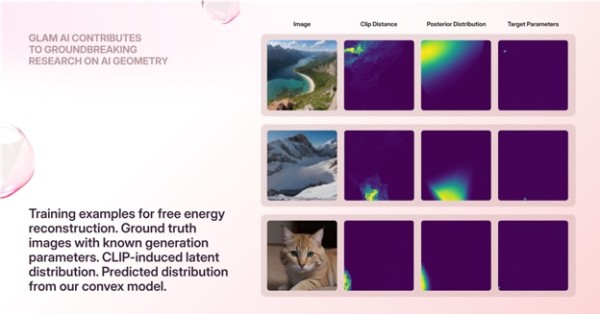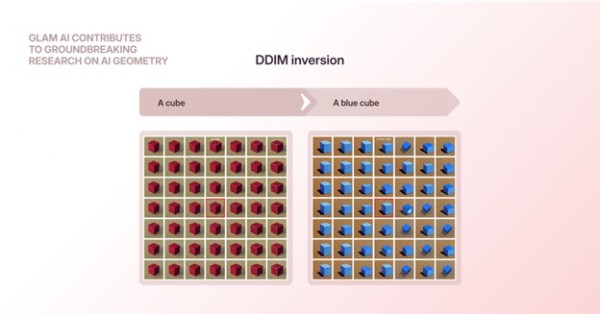Developer Offer
Try ImaginePro API with 50 Free Credits
Build and ship AI-powered visuals with Midjourney, Flux, and more — free credits refresh every month.
GlamAI Research Tackles Unstable Generative AI Images
GlamAI, a leading platform in AI-powered visual marketing for the fashion and influencer industries, is making significant strides in foundational AI research. Team member Alexander Lobashev has co-authored a groundbreaking research paper published at ICML 2025, one of the world's most prestigious machine learning conferences.


The paper, titled "The Hessian Geometry of Latent Space in Generative Models," addresses a common frustration in AI image editing: why a small, gradual change can cause an image to suddenly and unpredictably "jump" to a completely different state. The research, co-authored with distinguished AI scientists from top industry labs and academic institutions, provides a theoretical understanding of why generative models can behave in unstable and unpredictable ways.
Addressing a Critical Problem in AI Visuals
In practical terms, the paper explains a major hurdle for generative visual AI systems: why two almost identical input images can lead to drastically different, and sometimes completely unrealistic, outputs. This inconsistency often appears as distorted shapes, loss of identity, or strange hallucinations when applying filters, styles, or other transformations. For both consumers and professional creators, this leads to frustration, unpredictability, and a lack of trust in AI tools.
"This problem has been a major pain point in the visual AI space, particularly when realism and brand integrity are critical," said Paul Shaburov, Founder of GlamAI. "The research Alexander contributed to helps build a theoretical foundation to explain and fix this issue—and it's a great example of how GlamAI combines applied engineering with world-class research to move the entire industry forward."
Why This Research Matters
The authors have introduced a novel method for reconstructing the Fisher information metric, which captures the intrinsic geometry and curvature of a model's latent space. They show that this space isn't smooth but is divided into distinct "phases." When an edit crosses the boundary between these phases, the model becomes highly sensitive, causing small input changes to trigger dramatic shifts in the output.
Simply put, this research provides a geometric map to understand why models can suddenly "break" or produce bizarre results during image manipulation. This insight is a critical first step toward engineering models that are inherently more stable and deliver predictable, high-quality results. It allows teams like GlamAI to better tune and control model behavior, ensuring edits are both realistic and expected.
This is especially important in fields like generative photography, where users need AI-enhanced visuals to look natural while preserving the subject's identity. A poorly trained model might unnaturally enlarge a person's nose, misinterpret lighting, or distort facial features, all of which diminish the value of AI-generated assets.
GlamAI’s Edge: Research and Real-World Results
GlamAI's platform already tackles these challenges with a hybrid model that combines open-source foundational models, proprietary training datasets, and internal tools designed to boost image realism and preserve identity. The ICML 2025 paper directly validates GlamAI's technical direction and approach.
"Our customers—from influencers and content creators to emerging indie brands and global fashion companies—need images that are consistent, emotionally resonant, and brand-aligned," said Shaburov. "This research supports our mission by helping our models behave more predictably—and more humanely. We're seeing a strong trend toward realistic-looking generated images, and this research, along with others to come, is part of the technological stack we're using to deliver exactly what our customers demand."
This strategy is proving successful, with GlamAI reaching 1.3 million monthly active users and ranking among the top five most popular apps in the "Photo and Video Editing" category on the App Store as of April 2025.
About GlamAI and Accessing the Research
GlamAI is a visual AI platform built for influencers, content creators, and brands in the fashion and e-commerce spaces. By blending high-fidelity generative AI with a proprietary control layer, GlamAI helps teams create campaign-ready visuals, product try-ons, and social content instantly, without the need for traditional photo shoots or digital artists. The company is committed to advancing the field through open research and transparency.
Access the Paper
- Title: The Hessian Geometry of Latent Space in Generative Models
- Conference: ICML 2025
- Link: Read the full paper on OpenReview
Compare Plans & Pricing
Find the plan that matches your workload and unlock full access to ImaginePro.
| Plan | Price | Highlights |
|---|---|---|
| Standard | $8 / month |
|
| Premium | $20 / month |
|
Need custom terms? Talk to us to tailor credits, rate limits, or deployment options.
View All Pricing Details

